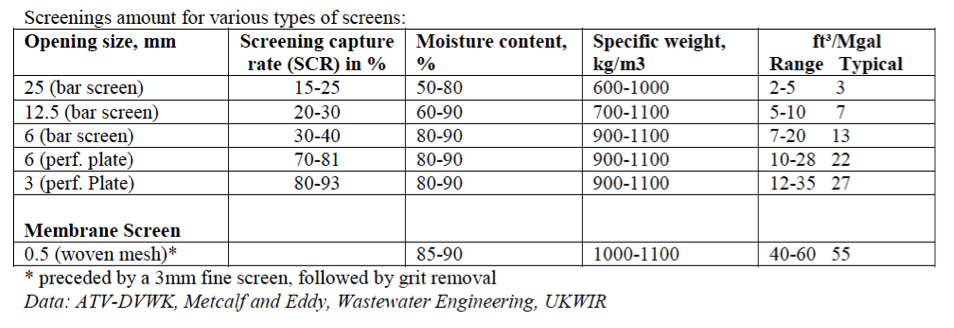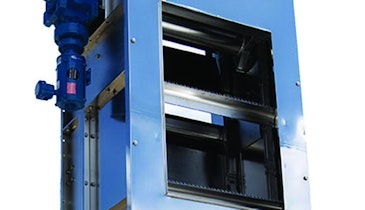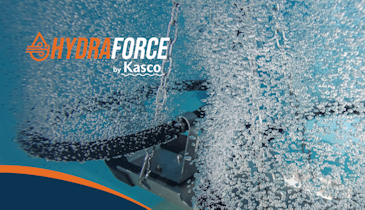Picture this. You've arrived at your treatment facility in the morning to discover a flood: malfunctioning equipment has caused a backup and wastewater is flowing down the driveway. What happened?
As headworks screening choices call for increasingly finer openings, the role of the screenings wash press becomes more critical. If the wash press cannot handle the loading, it can begin to create a backup of the screenings material and potentially shut down the screen in the channel.
In the article “So Many Choices: Putting the Right Screen in the Right Place” it was illustrated how different screens can be used in the process. As finer screens with higher screenings capture rate become more popular, the screenings loading take on different characteristics affecting methods of handling and processing. A better characterization of waste flows, both at the quantitative and qualitative levels, is needed to implement adequate treatment strategies.
Each collections system is unique
The first and most fundamental step in selecting and designing a proper headworks screen and matched screenings wash press, is to understand the wastewater it will be treating. Each community has unique characteristics that will affect what can be expected to come down the pipe and enter the WWTP.
The majority of the systems under consideration will be for a centralized facility receiving waste flow from a collections network throughout the community. Understanding how the waste is collected and transported is essential to designing receiving headworks.
A newer collections system comprised of basic municipal waste from domestic households and related support businesses is usually fairly predictable. This is especially true if lift stations are involved. With lift station pumps, the WWTP can more accurately predict the incoming flow, and coarse debris will be virtually nonexistent.
Collections systems that involve gravity feed using large-diameter pipes allow for debris and sedimentation to settle in the pipelines. This configuration poses a much higher risk for headworks at the WWTP due to the system delivering collected screenings in pulses during peaking events at a high use point of the day. The problem is severely exacerbated if the collections system is a combined sewer design. Storm events can act as a flushing event and bring settled material in the collection system. In some cases, this can overwhelm a headworks system if it cannot process the surge.
A quick search on the internet will provide a plethora of choices of screenings wash presses for consideration and evaluation. It is essential to understand that any screen and wash press can be overwhelmed and shut down if it is undersized for the load it will be expected to handle.
How to proceed
Anybody who has looked into the information available to determine expected screenings quantities in a wastewater flow will quickly discover the conclusion: “Well, that depends…”
The advancement of treatment systems has changed what can be expected in a particular WWTP.
If we draw a big enough circle around the nature of the wastewater for a municipal WWTP, it is possible to begin to formulate a basic assumption from which to begin design. The paper “Screening Considerations – A Guide to Selection” provides a compilation of published findings that underpin these assumptions. From those assumptions, one can derive possible screening quantities expected from different types of screens employed for a headworks in a conventional municipal WWTP.

The paper further qualifies the chart: “This chart should serve as a guideline on selecting the properly sized screenings washer/compactor. Care must be taken to size the equipment not for the average screenings amount, but for the screenings amount accumulated at the first flush or ‘surge’ during a peak event. Our experience has shown that the screenings amount under peak flow or surge conditions can be three to four times higher than under average flow conditions.”
Keeping the variability of conditions in mind, the sizing of a screenings washer/compactor for a 10 mgd plant with 1/4-inch bar spacing should be as follows:
10 mgd x 20 cu. ft. = 200 cu.ft./day
200 cu.ft./d/24 hrs = 8.35 cu.ft./hr x 4 peaking
34 cu.ft./hr capacity
For a perforated plate screen with 1/8-inch openings:
10 mgd x 35 cu.ft. = 350 cu.ft./day
350 cu.ft./d/24 hrs = 14.6 cu.ft./hr x 4 peaking
60 cu.ft./hr capacity
The above example applies to combined systems and sanitary collections systems. The screenings amount in these systems will be significantly higher than those of a separate system.”
A key takeaway from the article is to size both the screen and the related wash press system for the maximum load that headworks screen will encounter. While this chart serves as a guideline, it is prudent to understand the specifics of the unique site conditions.
The technology
Once the required capacities are understood, then it is appropriate to begin matching up the particular configuration choices of the wash press. The screenings chart, indicated above, identifies the probable screenings volume as it relates to the screen type and the media openings. As the captured screenings become finer, the quantities captured increase and the composition of the material changes. Organics that are useful in the biological process are extracted along with the inorganic screening material. The increased presence of organics requires a wash press technology that can adequately launder the screening material and return the organics to process.
Conveyance of the screenings will change based on the nature of what’s captured. Augured or sluiced conveyance systems are typically used to effectively convey wet screenings to a wash press from standard headworks systems that employ screen openings 3 mm or larger.
With smaller screen openings, 3 mm or less, the screenings captured become more of a viscous fluid, consisting primarily of a fibrous sludge that moves best if pumped or sluiced. Additionally, the receiving wash press needs to be able to handle and process the fine screenings without losing the fibers back into the process.
Buyer beware
Caution must be exercised when looking at capacity and performance claims indicated in various equipment brochures. The nature, the capacities and components of the system should be carefully reviewed. If the designer and user genuinely understand the system being designed, then they are in a good position to properly select the technology. Partnering with a competent manufacturer will help design a reliable system.
It is ideal to partner with an organization that has an established history and a record of competence with the technology being used in the project. Credentials touting both extensive experience manufacturing and a broad installation base provide a level of assurance of a successful outcome.
Visit the HUBER Technology, Inc. Storefront






